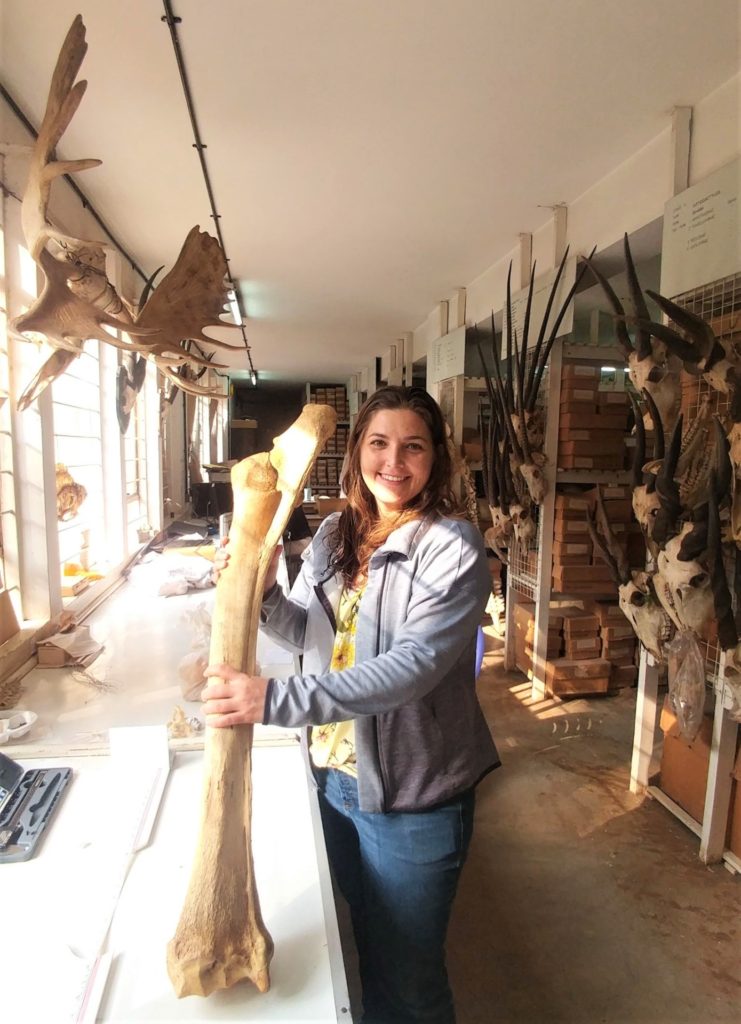- South Texas Students Meet Accordion Music Icons Los Tigres Del Norte In Edinburg Thanks To Khs America/Hohner Alianza Académica Initiative
- Fragile Planet Offers a Nighttime Wildlife Experience
- Falcons Soccer Off & Running
- Cameron County Receives Funds to Improve Two Parks
- Falcons Complete First Half of 32-6A
- School District to Help out Victims of California Wildfires
- Sand Castle Days Continued Despite Unexpected Weather
- Ready for District
- Discussion of Garbage Dumpster Rates, Agreements Between State & City on Highway Regulations, and More
- 31st Annual Shrimp Cook-Off is Right Around the Corner
Special Feature Looks At History For Biodiversity Conservation
- Updated: February 26, 2023
National Academy of Sciences studies focus on dynamic environmental changes and impact on plants, animals

Written by Adam Russell
Without conservation-based understanding and intervention, plant and animal species across the globe face rapidly changing ecosystems that will require dynamic adaptation or lead them toward extinction.
A special feature titled “The past as a lens for biodiversity conservation on a dynamically changing planet” in the Proceedings of the National Academy of Sciences and the overview article of the same name delves into how recent work in conservation biology, ecology and paleontology reveals how plants and animals respond to rapid and dynamic environmental changes. It provides a collection of 10 articles that integrate research approaches to understand how ecosystems and communities function and respond to large-scale environmental changes occurring across the planet.
About the special feature
Co-editor and author Michelle Lawing, Ph.D., a quantitative ecologist and associate professor in the Texas A&M College of Agriculture and Life Sciences Department of Ecology and Conservation Biology, said the special feature is a collection of papers that will provide a historical perspective on biodiversity losses by studying long-term ecological data and data from the fossil record.
In this collection, scientists from myriad disciplines have focused on anthropogenic impacts from pollution and land-use changes like urban sprawl, land fragmentation and deforestation, to the impact of climate change on ecological biodiversity. Many papers emphasize the basic structure and function of organisms in their ranges as a way to maintain and restore species resilience amid dramatic environmental change.
Lawing said the special feature brings together new insights and tools that ecologists, paleoecologists and conservationists can apply to identify ways to protect and restore plant and animal species communities on local, regional and global scales.
“The idea for the special feature is to use the past as a lens for biodiversity conservation now and in the future,” she said. “We hope the articles together advance research in the field by supporting a more comprehensive understanding of potential uses of long-term ecological, historical and paleontological data to answer questions in conservation ecology and biology by covering a big umbrella of related questions as opposed to any one research question.”
Special feature provides overarching view
The idea for a special feature was born in 2019 at an International Union of Biological Sciences symposium in Oslo, Norway. At the symposium, Lawing and special feature co-editor Jenny McGuire, Ph.D., assistant professor, School of Biology and School of Earth and Atmospheric Sciences at the Georgia Institute of Technology, made back-to-back presentations on dynamic range shifts and functional traits. These presentations caught the attention of evolutionary biologist, National Academy of Sciences foreign associate and eventual special feature co-editor Nils Christian Stenseth, Ph.D.
Stenseth approached Lawing and McGuire after the presentations and the three scientists agreed combining themes related to species’ geographical ranges and functional traits might be an interesting PNAS special feature. Ecologist Sandra Diaz, Ph.D., National Academy of Sciences foreign associate, agreed to serve as a fourth member of the editorial team to help curate and guide the special feature.
Lawing and McGuire reached out to researchers working on dynamic range change and functional traits. Researchers were brought together via a virtual symposium in December 2022 to discuss studies that would fit the special feature’s overarching themes.
The 10 studies presented in the special feature utilize ecological data focused on a variety of organisms including plants, birds, reptiles and mammals spanning decades, millennia and millions of years, Lawing said. By looking at the impacts over time, scientists can quantify the impacts of various environmental changes along timelines ranging from prehistory to the present.

“The work is important because we need a wide variety of tools to inform biodiversity conservation,” she said. “The more tools we have, the more ways we can find solutions to problems.”
Several papers within the special feature are early products of an ongoing $1.2 million grant project funded by the National Science Foundation and the National Environmental Research Council.
Special feature delivers broader view of nature
The special feature brought together scientists working in different fields that relate to a broader view of the natural world, Lawing said. Their discussions and subsequent work focused on the special feature’s themes and that led to a cohesive integration of research ideas that engage larger questions humans must address when it comes to conservation.
Lawing’s research study included in the special feature, Trophically integrated ecometric models as tools for demonstrating spatial and temporal functional changes in mammal communities, looks at the use of the ankle for the locomotion of herbivores and carnivores in animal communities across the globe.
Measurements on the ankle were functional traits of interest because of ankle function during locomotion and how that locomotion is related to the environment where the locomotion takes place, Lawing said. For instance, in the open plains, there will be more runners and more species that have ankles for running. In an environment with high vegetation and cover, the animals will need to climb and jump, so their ankles will be more suited for those tasks.
The first author in Lawing’s research study was a former National Science Foundation post-doctoral research fellow Rachel Short, Ph.D. who is now an assistant professor at South Dakota State University. She is a graduate of Texas A&M University, with a Ph.D. in ecosystem science and management with a focus on paleoecology.
Short said the main research finding of the study was that using multiple taxonomic groups in a community produces stronger interpretations of vegetation cover than a single group alone. It also demonstrates that joint estimation approaches can strengthen estimates of paleovegetation.
“The fossil record provides extensive information about biodiversity and its responses to environmental changes in the past,” Short said. “By developing methods to explore the past, we can inform our expectations of the needs of future biodiversity.”
Moving science toward conservation solutions
Other papers in the special feature also focus on functional traits in animal communities and how changes in the environment cause species to assemble in areas more attuned to those traits, Lawing said. Several papers also look at how human activity has altered ecological function and whether functional traits can forecast a species’ resilience in the face of change.
One paper in the special feature, Long-term, large-scale experiment reveals the effects of seed limitation, climate and anthropogenic disturbance on plant communities, co-authored by Joseph Veldman, Ph.D., associate professor in the Department of Ecology and Conservation Biology, illustrates how adding seeds restores plant diversity and that climatic variation affects the dynamics of plant communities across a large region.
Other special features over the past few decades have focused on similar ecological themes. Lawing said these efforts have successfully increased public awareness and scientific knowledge bases by bringing together disparate ideas and perspectives packaged within overarching contexts.
Lawing said she hopes this special feature provides information that stimulates public discussion about ecological relationships and humankind’s stewardship responsibilities and roles. She also hopes it will help inform and assist other scientists in studies to create additional conservation tools, and the continued study of dynamic ranges and trait-environment relationships throughout the past can inform future conservation decisions.
“When it comes to the environment, ultimately, we want to understand the resiliency within plant and animal communities when it comes to any changes that nature or humans throw at them,” Lawing said. “The resilience of the vegetation and ecosystem are part of that — and how resilient those functional traits are within a changing environment. Answering these questions helps direct us toward conservation solutions.”



